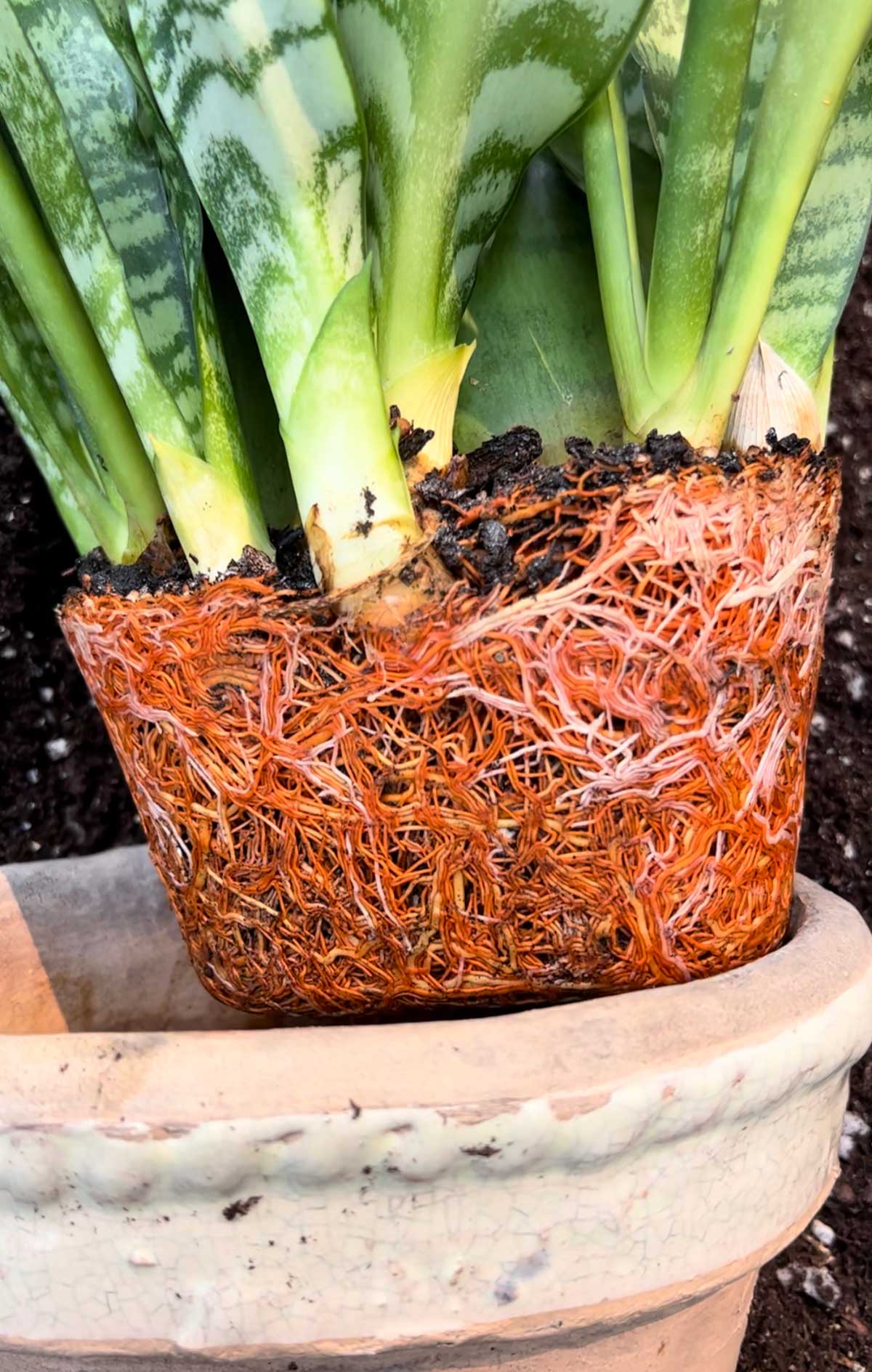Calatheas are beautiful plants that can add a touch of color and life to any room. However, like all plants, they need to be repotted from time to time, and repotting a Calathea is a delicate task that should be done carefully, because Calatheas are notoriously sensitive to changes in their environment and can easily go into shock if they are not handled properly, which can lead to leaf loss, wilting, or even death. If you’re not careful, you can damage the plant or even kill it. That’s why it’s important to know how to repot a Calathea properly.

The Importance of Repotting Calathea
Repotting a Calathea is important for several reasons. First, it gives the plant more room to grow. As Calatheas grow, their roots will eventually fill the pot, and if they don’t have enough room to spread out, they will start to circle around the inside of the pot. This can restrict the plant’s growth and lead to problems such as root rot. Second, repotting a Calathea helps to refresh the soil. Over time, the soil in a pot can become depleted of nutrients, and this can lead to problems such as yellowing leaves or stunted growth. Repotting your Calathea with fresh soil will give it the nutrients it needs to thrive.

How to Repot a Calathea
Repotting a Calathea is a relatively simple process, but it is important to do it carefully. Here are the following steps:
- Choose a pot that is slightly larger than the current pot. The new pot should have drainage holes in the bottom.
- Fill the new pot with a well-draining potting mix. Moisten the potting mix before you plant the Calathea.
- Carefully remove the Calathea from its current pot. Loosen the soil around the roots, but be careful not to damage them.
- Gently loosen any tangled roots. Trim any brown or damaged roots.
- Place the Calathea in the new pot and fill in the space around the roots with potting mix. Firm the soil gently around the plant.
- Water the Calathea thoroughly and allow the excess water to drain out of the pot.
- Place the Calathea in a bright spot with indirect light. Keep the soil moist, but not soggy.

Benefits of Repotting Calathea
There are several benefits to repotting your Calathea, including:
- Provides more room for growth
- Refreshes the soil
- Prevents root rot
- Promotes healthy growth

Tips for Repotting Calathea
Here are a few tips for repotting your Calathea:
- Repot your Calathea in the spring or summer. This is when the plant is actively growing and will be less likely to go into shock.
- Choose a pot that is only slightly larger than the current pot. A pot that is too large can lead to overwatering and root rot.
- Use a well-draining potting mix. Peat moss-based potting mixes work well for Calatheas.
- Water the Calathea thoroughly after repotting. Allow the excess water to drain out of the pot.
- Place the Calathea in a bright spot with indirect light. Keep the soil moist, but not soggy.

History of Calathea
Calatheas are native to the tropical regions of the Americas. They are a member of the Marantaceae family, which also includes prayer plants and arrowroot plants. Calatheas were first introduced to Europe in the 19th century, and they quickly became popular with gardeners and collectors. Today, Calatheas are grown all over the world as ornamental plants.

Myth of Calathea
There is a myth that Calatheas are able to predict the weather. According to the myth, the leaves of a Calathea will close up before a storm. However, there is no scientific evidence to support this claim.

Hidden Secret of Calathea
Calatheas have a hidden secret: they are able to purify the air. According to a study by NASA, Calatheas are able to remove harmful toxins from the air, such as benzene, formaldehyde, and trichloroethylene. This makes Calatheas a great choice for homes and offices.

Recommendation of Calathea
If you’re looking for a beautiful and easy-to-care-for plant, a Calathea is a great choice. Calatheas are available in a wide variety of shapes and sizes, so there’s sure to be a Calathea that’s perfect for your home or office.

How to Repot a Calathea: A Step-by-Step Guide
Repotting a Calathea is a simple process, but it’s important to do it carefully to avoid damaging the plant. Here are the steps:
- Gather your materials. You will need a new pot, potting mix, and a trowel or spoon.
- Choose a pot that is slightly larger than the current pot. The new pot should have drainage holes in the bottom.
- Fill the new pot with potting mix. Moisten the potting mix before you plant the Calathea.
- Gently remove the Calathea from its current pot. Loosen the soil around the roots, but be careful not to damage them.
- Gently loosen any tangled roots. Trim any brown or damaged roots.
- Place the Calathea in the new pot and fill in the space around the roots with potting mix. Firm the soil gently around the plant.
- Water the Calathea thoroughly and allow the excess water to drain out of the pot.
- Place the Calathea in a bright spot with indirect light. Keep the soil moist, but not soggy.

Tips for Repotting Calathea
Here are some tips to help you repot your Calathea successfully:
- Repot your Calathea in the spring or summer. This is when the plant is actively growing and will be less likely to go into shock.
- Choose a pot that is only slightly larger than the current pot. A pot that is too large can lead to overwatering and root rot.
- Use a well-draining potting mix. Peat moss-based potting mixes work well for Calatheas.
- Water the Calathea thoroughly after repotting. Allow the excess water to drain out of the pot.
- Place the Calathea in a bright spot with indirect light. Keep the soil moist, but not soggy.
Here are some common mistakes to avoid when repotting a Calathea:
- Repotting too often. Calatheas do not need to be repotted frequently. Repotting too often can damage the plant’s roots.
- Using a pot that is too large. A pot that is too large can lead to overwatering and root rot.
- Using a potting mix that does not drain well. A potting mix that does not drain well can lead to root rot.
- Overwatering. Calatheas do not like to be overwatered. Water the plant only when the soil is dry to the touch.
- Fertilizing too much. Calatheas do not need to be fertilized frequently. Fertilizing too much can damage the plant.
Here are some fun facts about Calatheas:
- Calatheas are native to the tropical regions of the Americas.
- There are over 300 species of Calathea.
- Calatheas are known for their beautiful foliage.
- Calatheas are relatively easy to care for.
- Calatheas can help to purify the air.
Calatheas are relatively easy to care for, but they can sometimes develop problems. Here are some common problems and how to solve them:
- Yellowing leaves. Yellowing leaves can be caused by
